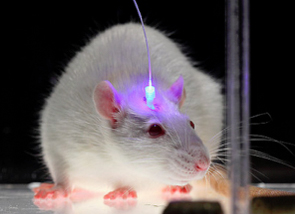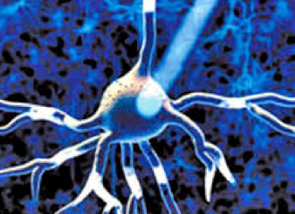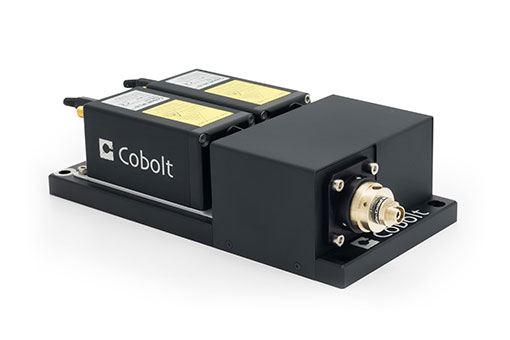Lasers for Optogenetics
Optogenetics “Controlling the Brain with Light”
Optogenetics is a new research method that has revolutionized neuroscience over the last years and opened up completely new possibilities to develop a deeper understanding of the function of the human brain. It allows researchers to study how neurological activity patterns within specific brain cells give rise to thoughts, behaviors and memories at an unprecedented precision level, and in this way helps finding cures and treatments for neurological and psychiatric disorders such as depression, addiction, schizophrenia and Parkinson’s disease.
The mammalian brain is a fantastically intricate system with a complexity beyond compare in which tens of billions of intertwined neurons with various characteristics and wiring patterns compute with millisecond-scale electrical signals and a diversity of biochemical messengers.
Neuroscientists identified already decades ago that in order to understand better how the brain is actually working they need a method to control only one type of cell in the brain while leaving others unaltered. Electrical stimuli using electrodes, cannot meet this challenge because electrodes are too crude a tool: they stimulate all the circuitry at their insertion site without distinguishing between different cell types, and, more important, their signals cannot turn off neurons with any precision. Optogenetics has proven to provide and important solution to this challenge. The method relies on the discovery that cultured neuron cells or brain cells in living animals can be genetically modified to express light-responsive proteins called opsins. Such light-sensitized neurons can then be turned on or off selectively with very high temporal and spatial precision, allowing detailed investigation of the structure and function of neural networks.
There are many different types of opsins, with different response patterns, which are of two fundamentally different types; Opsins used to open up an ion channel and hence “switch on” the cell activity, and opsins used to close or switch off the cell activity. Opsins used to switch on have their peak sensitivity at 470nm while the opsins used to switch off have sensivity peaks from 550 up to the NIR. The most commonly used switch-off-opsins have their peaks at 590nm.
To do an experiment, Neuroscientists infect a targeted part of a test animal’s brain with a virus carrying an opsin with the selected properties. When the biological process has made the part of the brain sensitive to light, a fiber connector is mounted to the head of the animal allowing well-controlled laser light to be delivered through an optical fibre to part of the brain which is subject for the experiment while the animal is freely moving.


A true challenge for the Neuroscientists is to expose the selected part of the brain with enough of light to achieve the desired effect, but without overexposing the brain. This makes the selection of a light source for optogenetics quite delicate. It is obvious that the laser must have the right wavelength for the opsin. It is also logical that it must have output power enough for the purpose but also be adjustable over a wide power range. The power stability over time is extremely important as an experiment can go on for several minutes. And another must is modulation capability from zero up to 200 Hz, and even though the speed is low, the ramp-up time must be in the ms range. Stable pulse-to-pulse power during modulation is also very important.
Optogenetics is a truly multi-disciplinary research field involving genetics, psychology, neurology as well as laser physics and fiber optics. This cross-scientific nature of optogenetics represents an important challenge. In particular it is a demanding task for many optogentics researchers to determine what is the right set of light sources and fiber optic components for their specific experimental work. In order to overcome this challenge, Cobolt has worked closely together with some of the world’s most prominent research groups in the field to develop tailored laser engine solutions for high-end optogenetics experiments that is easy to use for researchers with limited experience from lasers and fiber optics. The Cobolt optogenetics light-engine solutions consist of 473, 532, 561, 594 or 640 nm lasers with high speed, stable and high aspect ratio modulation capability, which are fiber coupled, either as single line lasers or as two lasers co-aligned and coupled into one fiber.
Related products

Cobolt laser solutions for Optogenetics; 100 mW 473 nm combined with 594 nm, 532 nm 561 nm or 660 nm with high speed, stable and high aspect ratio modulation capability. Provided as separate units with stable optical fibre delivery or combined into one single fibre.

